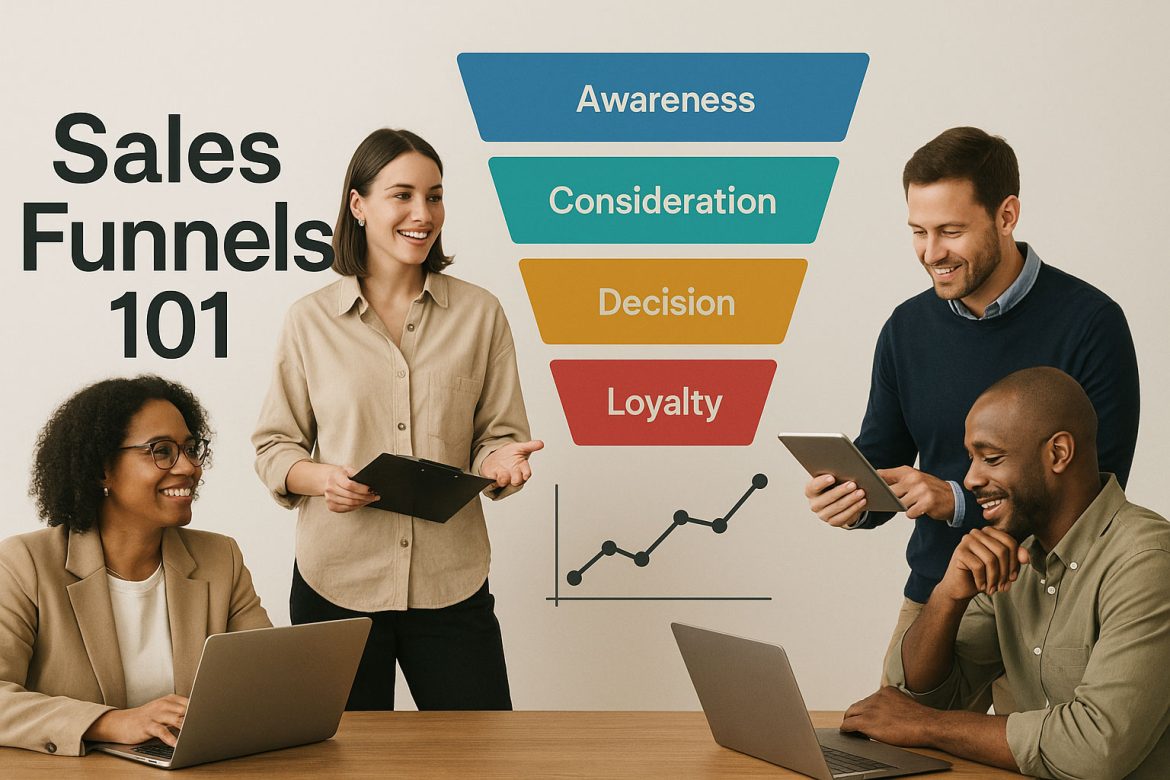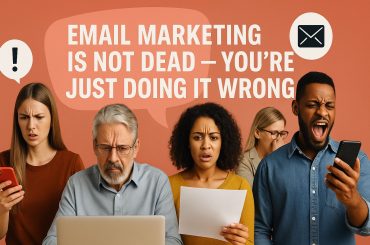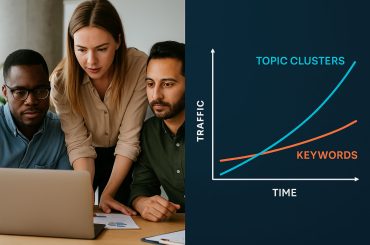Introduction: More Than Just a Funnel
The term “sales funnel” often brings to mind a cold, mechanical sequence: lead magnet → email nurture → sales page → checkout. But in reality, a funnel isn’t just a flowchart—it’s a reflection of human behavior, psychology, curiosity, hesitation, and trust.
In today’s landscape—where customers are hyper-informed, options are endless, and attention spans evaporate within seconds—the sales funnel must evolve into something more nuanced. It must become a journey design—a structured yet flexible architecture that meets people where they are, not just where your marketing wants them to be.
In this detailed exploration, we’ll map the buyer journey from awareness to loyalty, breaking it into intentional, strategic stages. This isn’t a theoretical walk-through—it’s a blueprint to help you clarify your messaging, convert more leads, and create a seamless experience from stranger to loyal customer.
SECTION I: What Is a Sales Funnel (Really)?
Let’s begin with a smarter definition:
A sales funnel is the strategic mapping of the steps a potential customer takes—from first awareness to final decision—designed to reduce friction, build trust, and guide them toward action.
Rather than push people through stages, a well-designed funnel:
- Removes confusion
- Aligns content with intent
- Speaks to motivations and objections at every point
Think of it less like a funnel—and more like a guided tour, with signs, rest stops, answers to questions, and friendly guides.
SECTION II: The Four Psychological Stages of Every Funnel
Whether you’re selling software, a service, a course, or a pair of shoes, your prospects move through four cognitive stages:
| Stage | Customer Mindset | Funnel Goal |
|---|---|---|
| Awareness | “I didn’t know I had a problem.” | Educate and interrupt |
| Consideration | “Maybe I need a solution like this.” | Build relevance and connection |
| Decision | “Should I choose this option?” | Remove doubt and reinforce trust |
| Loyalty/Advocacy | “I’m glad I chose this.” | Reinforce value and invite sharing |
Let’s break down each phase.
SECTION III: Stage One — Awareness (Top of Funnel / TOFU)
Goal: Capture attention and start the narrative.
At this stage, your customer isn’t “problem-aware.” They’re scrolling through TikTok, Googling casually, or browsing Reddit threads. Your job is not to sell—it’s to provoke curiosity and surface a need.
TOFU Content Examples:
- “5 Signs You’re Burnt Out Without Realizing It” (service-based)
- “Why 90% of [industry] Tools Waste Your Time” (SaaS)
- “The Mistake I Made Before Hiring My First VA” (entrepreneur audience)
Tactics That Work:
- Blog posts designed for SEO-discovery
- Educational short-form video (Reels, Shorts, TikTok)
- Lead magnets that solve micro-problems (checklists, calculators)
Messaging Tip:
Speak to the conversation already happening in their head. Meet them before they meet you.
SECTION IV: Stage Two — Consideration (Middle of Funnel / MOFU)
Goal: Establish credibility, offer clarity, and guide comparison.
Now that they’re aware, the prospect is curious—but cautious. They’re exploring options, reading reviews, testing tools, asking for referrals.
Here, empathy and education win. You don’t just tell them what you do—you show why it’s the right solution for them.
MOFU Content Examples:
- Case studies and testimonials
- Product walkthrough videos
- Comparison guides (e.g., “Us vs. Them” or “What to Look for When Choosing…”)
- Email nurture sequences with personal storytelling
Tools to Use:
- Automated email flows (via Klaviyo, ConvertKit, etc.)
- Retargeting ads that restate benefits and answer objections
- Webinars or live Q&A sessions
Messaging Tip:
Anticipate the emotional blockers:
“Will this really work for me?”
“What if it’s a waste of money?”
“What makes this different?”
Address those directly—with proof.
SECTION V: Stage Three — Decision (Bottom of Funnel / BOFU)
Goal: Remove doubt and make conversion feel like a no-brainer.
At this point, the prospect is solution-aware and brand-aware—but they’re deciding. Do they take the leap or walk away?
Now’s the time for urgency, clarity, and conviction.
BOFU Assets to Deploy:
- Product demos or free trials
- Personalized discounts or limited-time bonuses
- Direct CTAs with simplified choices
- Social proof (real-time purchases, reviews, influencer endorsements)
High-Converting Touchpoints:
- A/B-tested landing pages
- Cart abandonment email with a real-time incentive
- Text reminders with urgency framing
- Chatbots to answer last-minute questions
Messaging Tip:
At this stage, language should feel confident but never pushy.
Bad: “Hurry! Only a few left!”
Better: “Your productivity could look very different by this time tomorrow.”
SECTION VI: Stage Four — Loyalty & Advocacy (Beyond the Funnel)
Goal: Turn a buyer into a believer—and a believer into a broadcaster.
This stage is often neglected, yet it’s where your profit margin lives. It’s cheaper to keep customers than acquire new ones. Loyalty isn’t built through transactions—it’s built through surprise, service, and story.
Ways to Nurture Post-Purchase:
- Onboarding sequences with value-based messaging
- Early access to new products
- Referral programs that feel like rewards, not bribes
- Behind-the-scenes updates and co-creation invites
Advocacy Triggers:
- “You made this product better—thank you.”
- “We’d love your feedback before we launch.”
- “Your story could inspire others—can we feature it?”
Messaging Tip:
Treat loyal customers like insiders, not just repeat buyers.
SECTION VII: Mapping Your Funnel — A Sample Blueprint
Let’s say you sell a time management app for freelancers.
| Funnel Stage | Tactic | Example |
|---|---|---|
| Awareness | TikTok: “Why Freelancers Stay Broke” | 15-second explainer, no CTA |
| Consideration | Free quiz: “What’s Your Time Style?” | Email delivery, nurture begins |
| Decision | 14-day trial + onboarding email flow | Demo walkthroughs, case studies |
| Loyalty | Invite to private Slack group | Send productivity reports, beta invites |
SECTION VIII: Common Funnel Mistakes to Avoid
1. Over-automation
Automation should support, not replace, the human touch. If your emails sound like a bot or your chat feels like a script, you’re losing trust.
2. Unsegmented Audiences
Not all buyers are the same. A first-time browser shouldn’t see the same ad as a repeat buyer. Use behavior-based tagging.
3. No Emotional Resonance
Funnel builders obsess over features and forget feelings. Every message should answer:
“How will this make them feel better, smarter, freer, more in control?”
Final Words: Funnels That Feel Human Win
The best sales funnels don’t feel like funnels. They feel like conversations, moments of discovery, and natural progressions toward something better.
So, when designing yours, ask:
- Where is my customer emotionally right now?
- What objection can I remove with care, not pressure?
- What story would make this feel safe to say yes to?
Because at the heart of every conversion is confidence. And confidence is built—not forced.
In a world of cold campaigns and transactional sales tactics, the warmest funnel always wins.
Start mapping with empathy. The conversions will follow.




